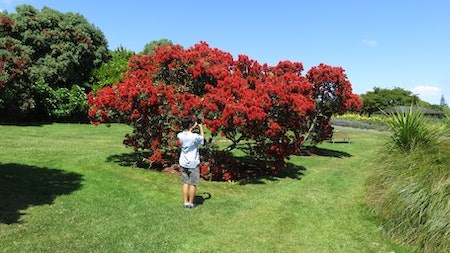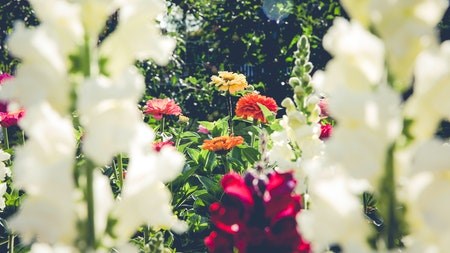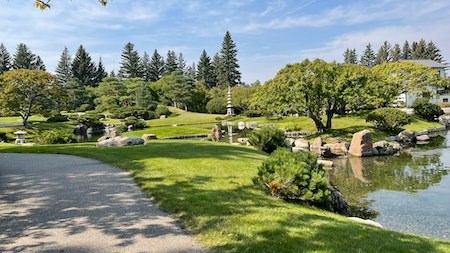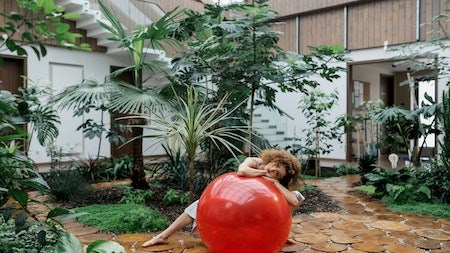South Africa has nine provinces, each with its own climate – and even multiple climates in different regions of each province.
Broadly speaking, the inland provinces have hot summers and cold winters, whereas the coastal provinces have more temperate climates. But in Kwa-Zulu Natal, for instance, the coastal regions like Durban, Port Shepstone in the south and Ballito in the north are warm all year round. In contrast, inland KZN regions like Underberg and Ladysmith experience severe frost and even snow in winter.
WATCH : How to make the most of organic gardening.
These differing growing conditions provide the background for a wide variety of plants, which can be endemic to specific regions. This makes gardening in South Africa interesting, no matter where you live – there is no one size fits all.
Gauteng
Pick garden roses at any time of day and place them into a bucket of cold water. Be careful not to pick more than half of the long-stemmed blooms on a plant at one time, as losing too many leaves can cause root shock. More flowers will soon be produced.
Clivias are at the end of their flowering season now. If you need to lift and divide yours, do it once flowering is over towards the end of the month.
Tall annuals like delphinium, digitalis, aquilegia and campanula in colour bags are ideal for filling bare spots in mixed beds.
Carex hachijoensis evergold is a clump-forming ornamental grass with narrow yellow and white leaves with green edges, which creates a striking border to flower beds.
Petunias are perennially popular summer annuals but don’t plant them in the same spot every season. This will help prevent the build-up of pests and soil pathogens.
In the vegetable and herb garden, plant some of the different chilli varieties and grow mints in pots so that they don’t become invasive.
Free State
Fertilise roses regularly and water very well - at least two or three times a week. Apply a systemic drench at soil level to keep aphids at bay, and place some organic mulch around each bush to help retain water.
Plant new trees now to establish them well during summer. The amber tree (Liquidambar styraciflua) is a firm favourite for its lovely autumn colours, along with the elegant Combretum erythrophyllum (river bush willow).
New Guinea impatiens are in garden centres now, in a wide range of colours. Although they are shade-loving plants, they can handle more sun than impatiens wallerina as long as you keep their roots damp.
Plant green pepper and tomato seedlings this month. They need sun, compost and bird netting for protection from birds.
Low hedges of dwarf marigolds, wild garlic (Tulbaghia), lavender and rosemary will attract good insects and repel the bad ones.
Limpopo
Plant agapanthus in bulk for summer colour. Malanseuns’ Buccaneer is a new release with dark blue flowers all summer long, and Blue Zebra and Summer Gold have variegated foliage.
If agapanthus don’t flower as they ought, they may need more light, or they may lack potassium which is needed to set flower buds. Feed plants with an organic 3:1:5 fertiliser. Although they are water-wise, they do need to be watered deeply two or three times a week in hot weather.
- Water your garden in the early mornings or late afternoons.
- Trim azaleas to encourage new growth for next season’s blooms.
- Feed cycads and cycas with an organic fertiliser.
- Be on the lookout for lawn caterpillars and mole crickets, which will start being active from September until February.
- Keep feeding hydrangeas to get them ready for Christmas.
- For colour in the garden, plant red salvias, snowy lobularia (alyssum) and fire engine red begonias.
Western Cape
Mulch your garden, and be sure to leave no bare earth uncovered. This will help plants cope with high temperatures and hot summer winds.
- Keep an eye out for red spider mites on roses, fuchsias and azaleas.
- Plant grasses around the edges of water features as well as in the water. Consider Juncus effusus, a perennial grass- or reed-like plant which grows naturally in streambeds and marshes.
- Pelargoniums will provide colour all summer long. They like well-drained soil, plenty of light and good air circulation. Water when the soil feels dry and feed them every two weeks with a water-soluble fertiliser.
- Cucumbers can be planted in the garden or in pots as they grow upwards and don’t take up much room. Soil should be well-composted and kept moist.
Kwa-Zulu Natal
- Turn compost heaps and remove any material that has decomposed sufficiently to be used in the garden.
- Make sure gutters and drains are clear and ready for the rainy season.
- Check for pests and diseases as temperatures rise to remove them at an early stage.
- Severely prune spring-flowering jasmine to prevent it from getting out of hand.
- Mow lawns frequently and feed monthly with an organic lawn fertiliser.
- Fill pots and window boxes with Impatiens New Guinea and begonias.
- Sow sunflower and zinnia seeds for a regular supply of cut flowers.
With the guidelines provided above, you are set for meaningful gardening in October.
Writer : Sarah-Jane Meyer




